True or False.
Area and Perimeter are the exact same thing.
False.
The Area is the inside of a closed geometric two-dimensional figure.
The Perimeter is the outline of a closed geometric figure.
Name a real-world example where area is used.
Painting a canvas, wall, or other flat surface
Tiling a floor or blacksplash
Carpet for a room
Sod for a yard
Shingles on a roof
Siding on a house
Dough for a pizza
Wallpaper for a wall
MANY MANY other examples!!
Find the area of the triangle. Justify.
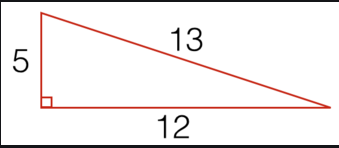

What is the formula for finding the area of a parallelogram?

Area of a parallelogram is base X height
A = bh
*you must use perpendicular lines to determine base and height*

To decompose a shape means to do what?
To break it down into parts (take apart)
Fill in the blank.
The Perimeter is the ___________ of a figure.
Outline of a closed geometric figure
Border of a closed geometric figure
Fill in the blank.
The Area is the ___________ of a figure.
inside of the figure.
Area is two-dimensional.
Surface Area is three-dimensional.
Find the area. Justify.
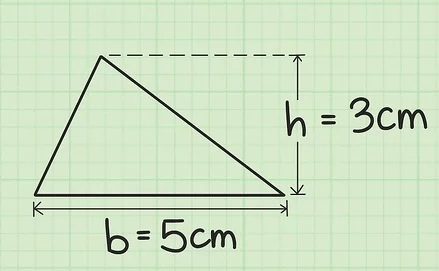
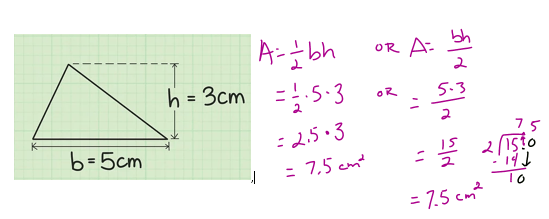
Find the area of the parallelogram. Justify
10 * 5 = 50 inches2
The line segment that is 6 inches is not perpendicular to the line segment that is 10 inches. It is also not perpendicular to the line segment that is 5 inches.
Decompose the shape to find the Area AND Perimeter.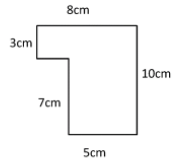
A = 59 cm2
P = 36 cm
Lisa thinks the perimeter of the figure below is 17.
Is Lisa correct? If so, how did she find it. If not, what is it?
Lisa is not correct. Lisa found the area. Area is the inside of a figure. The perimeter is the outline of the figure. The perimeter for this figure is (starting from the top right corner and traveling to the left) 3 + 2 + 1 + 1 + 1 + 2 + 3 + 2 + 1 + 1 + 1 + 2 = 20.
What is the area of the figure below? Justify your answer.

The area is 17 units squared. Or 17 square units.
You can count all the squares inside the perimeter (outline).
Decompose the figure into parts (red) and find the area of each part (black), then add those areas together.
Identify the base and the height. Then find the area. Justify.
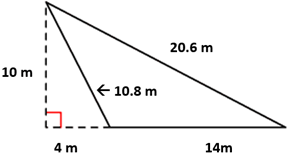
The base and height are determined by the perpendicular lines. Perpendicular lines meet at a 90°, the little square where the perpendicular lines meet tells me that these lines meet at 90°.
We are looking at 10m, 4m, and 14m. These are the measurements that correlate with the perpendicular lines.
The base is the length of the triangle, this does NOT include the dotted line that extends from the triangle. This dotted line helps to form the perpendicular lines, which helps to find the height. So, the base is 14m.
The height is 10m.
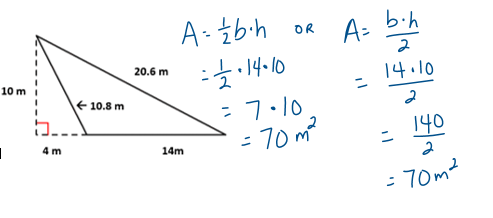
Identify the base and the height. Then find the area.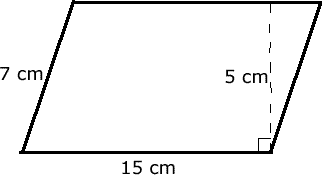
5 cm is the height. 15 cm is the base.
A = bh
A = 5 * 15
A = 75 cm2
7 cm is not perpendicular to 15 cm, so this IS NOT the height.
Find the Area and Perimeter
A = 64 cm2
P = 34 cm
Find the Perimeter. Justify.

The Perimeter is the outline of a closed geometric figure. It is like walking the outside of a closed figure.

Find the area. Justify your answer.

105 m2.

How is the area of a triangle related to the area of a rectangle?
Key point is to include that a triangle is half of a rectangle. OR two triangles equals a rectangle.
Find the area of the parallelogram. Justify.
8 * 15 = 120 inches2
Find the Area, Perimeter, and the two missing lengths.
You must have all 4 answers to earn these points!
A = 62 cm2
P = 34 cm
missing horizontal length is 4cm
missing vertical length is 2 cm